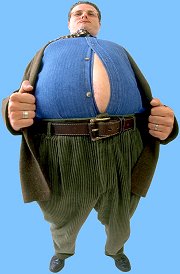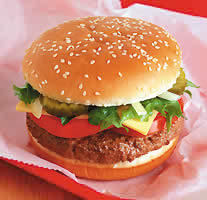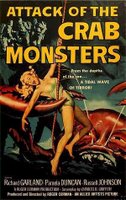
Thursday, December 21, 2006
Time Flies, So Stop Pushing

Monday, November 13, 2006
SM, non-smoker, inso female, uninhibited, not afaird of cavemen.For walks on tundra and possible gene swap. No weirdos please.
Let Someone Else Worry For You, Sourpuss

The holiday season is stressful, so much so, that it's beginning to seem odd that we call it the holiday season.
Maybe another name would be better. Something like, "The Season of Obligations and Unhappy Relatives," or SOUR.
"I'm dreaming of a sour Christmas..."
A group in Arizona has formed to keep a lid on annual angst. It's called "The Worry Club."
Instead of battling to cheer up, go ahead and wallow in despair. Let your mood sink. Perhaps if you worry enough, whatever frightens you will dissipate. Like if you want to stop eating butter pecan ice cream, buy a half gallon and force yourself to eat it all in one sitting.
Unfortunately, anxiety does not tend to work like that. Let it run wild and it just gets worse. The brain has an inexhaustable supply of anxiety-inducing chemicals. Fret all you want, your neurons will make more.
And so forth.
So have a happy sweet and sour holiday.
Tuesday, November 7, 2006
Ka-Boom

Many physicists suspect that North Korea's recent nuclear test was what weapons designers used to call a fizzle.
There was a nuclear chain reaction and enough energy was released to send seismic waves from one end of the planet to the other. Even more would have been generated, but the device probably blew itself apart too fast.
This is not totally surprising, because making a workable atomic bomb is not easy. Thank goodness.
The idea is to take a sphere of pure plutonium-239 and compress it into a solid, super-critical ball. Then neutrons split nuclei, which emit more neutrons, which split more nuclei, and the chain reaction proceeds exponentially.
The smaller nuclei have extra binding energy, which they shed as gamma rays, x-rays, and a tremendous explosion.
However, the sphere must be compressed precisely and rapidly. Generally, the sphere is surrounded by carefully shaped conventional explosives. All of these charges have to be detonated at essentially the same instant. Not easy.
Circuitry originally depended on ultra-high speed switches called klystrons. Until a few days ago people interested in the details could find them online in old Iraqi military papers posted by the U.S. government for some strange reason.
When the Web existence of the atomic secrets became known they were quickly taken down.
The whole episode is bizarre.
The principles of atomic weapons are well known and the subject of many books. The difficulties lie in the details, like, how do you rig the explosives.
Once that gets out, assuming it hasn't already courtesy of the U.S., the world will be in a heap of trouble.
Death Takes A Job In A Hospital

U.S. medicine is increasingly expensive, filtered through unqualified insurance-o-crats and becoming less and less accessible.
But at least it's better than the medical system in Britain, where the chance of death by medical error is a breath taking 1 in 300.
Britain's senior doctor made the estimate recently. Presumably that's a lifetime risk.
That's about the lifetime risk in the U.S. of dying from gunfire, overdosing on narcotics, or falling down. According to the National Safety Council, the least likely accidental cause of death in the U.S. is by a snake or lizard bite.
The most common include car crash, self-inflicted gunshot (not really an accident, assault with a firearm, or the ever popular falling down.
In Britain, the average chap is 33,000 times more likely to die from a medical error in a hospital than in an air crash, according to the chief medical officer Sir Liam Donaldson. "In an airline industry, the evidence ... from scheduled airlines is the risk of death is one in 10 million. If you go into a hospital in the developed world, the risk of death from a medical error is one in 300," he said.
Perhaps Donaldson is counting the number of people who die in hospitals, which these days, includes most of us. Otherwise, he's defining medical error in a ridiculously broad way.
The message seems to be that if you want to avoid dying in a hospital, spend as much time as possible flying in an airliner.
Wednesday, October 25, 2006
Mean Comments Don't Help the Overweight

Yale diet scientists have discovered that nagging people about being overweight is not helpful.
In fact, stigmatizing those on diets makes them abandon the diets and seek more food. Many people would respond to this study with an obtuse "Duh."
Of course overweight people don't want to be teased and made to feel like self-saboteurs. Though this seems obvious now, that response comes after decades of treating the overweight as social and physical pariahs.
So, "Duh" really marks an advance in thinking. It seems as if people are finally realizing that obesity is not an abject absence of self-control and a failure of free will.
This is not to say that obesity is healthy. It isn't. But clearly, shame does more harm than good.
Tuesday, October 24, 2006
Bore Not, Blog Not

Good grief.
Is this as boring as all of the other blogs? You bet! Even the notable ones. Are any blogs interesting or are we all deluding ourselves?
Or boring ourselves on purpose as an escape from the devised, depraved existence in which we find ourselves.
Boredom is a saving grace. We spend four years in college learning how to be politely bored. Boredom is what sets humans apart from other animals. They learn, anticipate, plan. But do they get bored?
No. That's our one true human traint. Boredom is not mindless. It's too much mind.
Are you bored yet?
Blah, blah, blah. Of course you are.
Here we have graphic proof that only the thoughts of a very few people are interesting, valuable, or revelatory. Fernando Pessoa had original perceptions. The rest of us? Blah.
Denis Johnson? Yes. You? No.
But don't fool yourself. Boredom is valuable. It gives you something to do. Otherwise you'd be wasting your time. Boredom is truly yours and yours alone. That's one thing no one can take away from you.
It's reliable and effortless. And people envy the truly bored.
So, go ahead. Be bored.
Just do it the right way.
Clang! Coumadin Time!

An astounding 700,000 people in U.S. poison themselves every year by taking the wrong medicine, too much of the right medicine, or because of an adverse reaction to a medicine.
Adverse drug effects accounted for 2.5 percent of emergency department visits in the years studied by the U.S. Centers for Disease Control and Prevention.
The main problem seems to be confusion. Patients take an over-the-counter or prescription pill, forget, and then take another too soon.
Some drugs, such as blood thinners and medications for diabetes, were especially prone to accidental misuse.
But can that number possibly be true? That's almost 1 million Americans. Or about 0.3 percent of the population. So, yes, it does make sense.
Imagine you take six drugs a day; one three times a day, another when you wake up and go to sleep; another every four hours, a second drug three times a day and as needed, another taken as needed or every two hours, and another than can only be taken with food.
How could you not be confused? Here's where a robot could really be useful. Load all of the drugs into the machine. After each load, enter the information about when the drug should be taken. The machine would also have an "as needed" button, but the robot would keep track of how many times it's pushed.
The robot would have a sound alarm and flashing light. The pills would emerge from a shoot, like a gum ball machine. The machine could only be opened with a key that's in the possession of the person in charge of keeping the robot supplied. It would run on electricity and also contain emergency batteries.
This shouldn't be too hard to design.
In fact, you could simply take the machine to the pharmacy. Simple.
Or, you could not smoke, stay slim, exercise, not drink in excess, have good genes and no family history of heart disease or cancer.
That's the ticket.
Political Lunacy

A social worker at Southern Connecticut State University has completed a study showing that support for President George W. Bush is especially high among the mentally ill.
In fact, the more severe the mental illness the greater of support. Christopher M. Lohse, the researcher, also discovered that Bush supporters showed a lower understanding of current issues, politics and government than non-supporters.
The study involved 69 psychiatric outpatients in the 2004 presidential election. The subjects completed various tests to measure their impairment.
"The funding that political preference for George Bush was associated with poor mental health is consistent with previous research on voting preference and mental illness," Lohse wrote, based on a paper published in 1977 by Frumkin and Ibrahim in "Perceptual and Motor Skills."
This appears to be a serious study, but releasing it two weeks before the election betrays a certain partisan bent.
How the mentally ill perceive the world is interesting, however. Unfortunately Lohse does not reveal the diagnoses of the 69 outpatients.
Maybe psychiatric patients have some political predictive value.
As the schizoids go, so goes the nation!
Monday, September 18, 2006
If I Were A Hyena I'd Eat Your Head

Snoring is definitely not an evolutionary advantage.
A few hundred thousand years ago emitting a sound like a lawn mower every few seconds would draw every predator within ear shot.
And the snorer is as his most vulnerable. He'd wake up with sabre tooth tiger fangs sticking out of the back of his head.
Snoring is apparently another one of those unexpected results of civilization. We can now safely snore, in the sense that we need not worry about hyenas with sharp ears.
However, loud snoring is associated with obstructive sleep apnea. This is a condition in which your floppy soft palate seals off your windpipe, almost waking you up, over and over and over.
It increases the risk of heart problems, high blood pressure, and falling asleep at any opportunity, sort of like the actors in the mattress ads.
There are non-surgical ways to effectively treat sleep apnea. Basically, you strap a mask over your face connected to a pump that blows air down your throat all night.
What does not work are devices designed to pull your nostrils open. Of course open nostrils are good, but snoring has zippo to do with the nose, and everything to do with the floppy tissue at the back of your throat.
For cripe's sake, get a mask.
Tuesday, September 12, 2006
Mad Dog or Thunderbird, Sir?

Either a wonderfully dry group of satirists has been born - or a bunch of crackpots with a harmful agenda is at work.
They call themselves the Reason Foundation, which is already kind of funny.
The foundation's latest e-mail report purports to demonstrate that people who drink heavily earn more money than social drinkers and those who abstain.
This contradicts common sense, but common sense isn't always correct. The foundation clowns instead use a nonsensical equation and impossible to interpret data sets to "prove" its hypothesis.
This is a real-life example of what you should learn math. Someone, somwhere will read and believe the report and start bringing a bottle to work and keeping a short dog in his jacket.
That's what all of the successful people do. You can see them lounging outside on the curb at night or sleeping in cardboard boxes.
There's nothing wrong with sensible drinking and it may even be OK to overindulge occasionally if someone sober can drive you home and dump you on your front lawn.
Reason Foundation, meet "the aristocrats."
Sunday, September 10, 2006
Adding Insult to Injury
What could be more cruel to the firefighters, police officers, steel workers, and everyone else who endangered themselves by working in the wreckage?
And finally, how gullible are we ultimately?
Many people still wonder who was behind the assassinations of the Kennedys and Martin Luther King Jr. Conspiracies seem possible because only a few people, if any, witnessed the events.
However, tens of thousands of New Yorkers and thousands of people in the Beltway watched 9/11 as it happened, in real time. Millions more saw endless videotapes of the tragedy from dozens of different angles.
Could a passenger jet have fired a missile at the World Trade Center tower without anyone noticing? Only now do we see images of "bulges" or "pods" under the wings. But no one saw the alleged weapon.
Workers in the towers did not see crews planting explosives on girders before the fact. No one claims to have seen a cruise missile or a fighter jet crash into the Pentagon.
All we are given is misinformation after the fact. Fuzzy images. Blurry thinking.
Circumstantial nonsense.
After five years they only seem to be getting started.
It's pathetic.
Saturday, September 9, 2006
That Morning
Usually she tells me an interesting odd fact or asks an esoteric question from her officemates.
On this morning I recognized the ring and dutifully answered the phone. She sounded agitated. All I could make out was "The World Trade Center," and "Someone crashed into the World Trade Center."
"What?" I said. This was going too far. And strange.
"Turn on the TV," she said, and hung up.
The Sony buzzed to life and I saw what everyone else was watching that morning. The network was showing replays and replays of replays of what happened minutes before. Huge jets. Twenty-story fireballs. Debris filling the sky. Miles and miles of smoke.
I sat on the floor in a patch of sunlight and watched, bewildered.
Wednesday, August 23, 2006
Hey, Give me another quarter of a second!

According to psychologists at Princeton University, we judge the character of a new face in one-tenth of a second.
Specifically, 200 college students who viewed photographs decided whether the person imaged was attractive and trustworthy in less time than it takes to sneeze.
Given more time to think, the decisions only became firmer.
Other scientists have determined that in cultures around the world, what is considered most attractive is an average of the population features. That is, a nose too long or too short was not ideal, but the nose in the middle was.
So, what the Princeton students were deciding in a split second was how closely the faces were to our idea of beauty. And our idea of beauty is essentially the least extraordinary.
Beauty and truth, as John Keats poetically pointed out, are closely entwined, making it easy to see why attractive people seem more trustworthy.
Also, being able to decide instantly whether a person is likely to be friend or foe is a clear advantage in survival and mating.
However interesting this research is, it ignores what makes humans human: language. We may find someone attractive until she starts to talk. Likewise, someone may seem unattractive, but he might have a great sense of humor (which women claim to find attractive.)
If you look in a mirror, what do you think?
What Me Worry?

Fear's a funny thing.
We tend to have a cockeyed list of worries.
We fear death, although as far as we know, everyone's doing it.
We worry about who's going to win "American Idol," or what's going on with the people on "Lost."
We worry about why our next door neighbor's lawn looks like a putting green, while the one behind the house is a ragged patch of Mohave Desert.
Can we afford to send our daughter to college? Can we afford obedience school for the dog? We worry because we do not understand what the financial planner is talking about.
Was it a mistake to paint the new window glazing with latex primer?
Most of those aren't worth the adrenaline.
To mis-paraphrase Franklin D. Roosevelt loosely, what we have to fear the most is what other people fear.
Prevention magazine presumably conducted a poll or lifted numbers from a government report on the five top health fears of women.
The number one fear is breast cancer, followed by HIV/AIDS, Alzheimer's disease, and ovarian cancer. What they should worry about is heart disease, stroke, lung cancer, chronic respiratory disease, and diabetes.
Why not worry about all 10?
If you really want to worry about something, consider that according to Prevention, 61 percent of people queried said losing a pet would be more traumatic than getting laid off.
(These are people who've owned a pet -- but never been fired.)
Wednesday, June 21, 2006
Please Pull Up to the Second Window


Some nerve.
You take several tons of dead wood and assemble them into a house and then you see termites.
But what's a termite to think? They were here a long time - millions of years - before you were and they eat dead wood.
So building a big pile of dead wood is an open invitation to termites. They're very myopic and probably don't recognize that they're gnawing into an artificial structure. But even if they had sharp eyes and bigger brains the house wouldn't look very different from a freshly felled tree trunk.
At some point ants appear. They're foraging and find a place with water and carbohydrates of all kinds. (Your kitchen).
Again, ants have been looking for food since the dawn of time and they're just acting naturally. Same goes for earwigs, silverfish, centipedes, spiders, bees, wasps, and most other insect intruders.
Humans are semi-responsible for two vermin. Wherever we go cockroaches and rats follow. The brown and German roaches only live in proximity to people. Rattus rattus also doesn't venture far from our inevitable squalor.
Blattus and Rattus probably aren't conscious of humans either.
It's like some super-intelligence built McDonalds' on every corner for reasons we can't comprehend, and then tried to crush us or kills us with nerve gas every time we went there for a Quarter Pounder.
Monday, June 19, 2006
Attack of the Tick Monster

Crab monsters are hardly any problem these days.
Few buxom blondes are born away by enormous arthropods. What we have to contend with are crab's least likeable relatives, the ticks.
Crabs serve some ecological purpose. They consume detritus and other bits and pieces of stuff that other benthic organisms reject.
They're also a food source for octopuses and squids. And who knows, probably bigger crabs, too.
If crabs suddenly vanished from the seas, there would be consequences. Something unpredictably bad.
Consider the same exercise with ticks. No animals that we know of subsist on ticks.
Anteaters eat ants, which don't even taste good. Almost all organisms are consumed by other organisms. Mosquitoes provide food for birds, bats, reptiles and spiders. But ticks?
A creature that did eat ticks would have a difficult time finding them. They aren't a social insect, like ants. They're solitary and difficult to locate. And once captured, there isn't much to a tick unless it's engorged with blood.
Nature, in its wisdom, has eliminated the middle-man. Animals that live on blood take it directly from the source (leeches, bedbugs, mosquitoes, vampire bats, horseflies, and so on).
So, if ticks were no more, nothing would go hungry. Ticks don't even have fleas. Ticks, at their most benign, take blood and make more ticks. At their worst, they spread a variety of bacteria and protozoas.
This summer ticks are as thick as flies. They'll be with us until the daily high is 175 degrees and an absence of ozone bathes Earth in lethal ultraviolet rays. Even then, they will probably survive.
One need not believe in intelligent design to consider that ticks must be here for an important reason.
Once that becomes clear, it might shed light on the purpose of fleas.
Wednesday, May 3, 2006
Infant Morality
The rate of infant mortality among black women is about 2.5 times higher than the rate in white women. This is troubling because the figure seems to hold across socioeconomic lines, does not depend on the relative rates of cigarette smoking, or the amount and timing of prenatal care.
In other words, white mothers who smoked and neglected their health -- yes, stupid things to do -- still did not have an infant mortality rate as high a blacks.
But, the thoughtful man from Westville argued, a valid comparison between the races could only be made if equal groups of black and white women were studied. Black women have twice as many babies as whites, he alleged, which throws off the statistics.
The infant mortality rates are expressed as the number of deaths per 1,000 births.
"But," the caller said, "If you had as many black women they have twice as many babies so the statistics wouldn't be so bad."
The logic is subtle, in a dunderheaded kind of way. Twice as many babies, so twice as many infant deaths.
What we have here is an issue of what statisticians call "sampling." Sampling error would be including an abnormally high or low number of black women with dead babies. However, increasing the sample size only lowers sampling error a little. But infant mortality is a description of existing data, not an exercise in probability, as the Westville man believes.
Moreover, the mortality rate is stated as a common ratio, per 1,000. That scales up or down the results accordingly. So the unfortunate truth is that infant mortality is higher in the black than the white community.
Do all of these numbers seem impossibly dry and boring?
If so, get used to it and learn about it or stop offering opinions on matters of statistics.
Friday, February 17, 2006
Thinking Things Over
This really should not be a surprise, considering the nature of memory.
Memories usually involve images, actions, perhaps sounds and smells, and an array of emotions. Remember, for example, your wedding day. Or, if you're single, ponder your last car crash. Anything significant.
You could probably write several pages. The question is, how is all of this information organized? Memories are cross referenced and linked to other memories.
So incoming sensory information that will become a memory probably has to be "deposited" in several places. And somehow the memory will be associated with events before and after.
Whatever is happening in the brain is beyond complex. The brain isn't a filing cabinet, or a hard drive, or a book.
It's probably more like a dynamic, shifting, replicating, duplicating, comparing, adding, subtracting, including, excluding, evaluating, ordering, disordering, holistic, interconnected, parallel, linear something or other.
The fact that we can even think about thinking is just too complicated to think about.
So, of course whatever a memory is, it enters the mind through more than one door.
Friday, January 27, 2006
The Lighter Side of Lung Cancer?
Researchers at UCLA studied 183,813 African-American, Japanese-American, Latino, native Hawaiian and white-American men and women who smoked.
Over eight years 1,979 of these people were diagnosed with lung cancer. Not surprisingly, the risk was related to the number of smokes per day.
Among people who lit up 30 cigarettes a day, or less, African-Americans and native Hawaiians had a significantly higher risk of lung cancer. If you had to have cancer, lung is a bad, very bad, choice. People with lung cancer have a low five-year survival rate.
Over all, African-Americans and native Hawaiians are way more likely to get lung cancer.
The question is why.
The doctors controlled for differences in diet, physical activity, and other pertinent factors. Even so, blacks and Hawaiians are apparently more prone to lung cancer.
This is really puzzling because all of us humans originated in Africa (a long time ago) and only recently developed "racial" characteristics. The idea of races is scientific piffle, biologists say.
There are reasons for certain differences. If you live near the equator darker skin helps protect against skin cancer. We need sunlight to use vitamin D, which is why people at higher lattitudes with less sun have paler skin. Maybe.
That makes sense in a certain way. But what advantage does susceptility to lung cancer confer? Or is it really a stronger response to nicotine? More sensitive brains? Better sense of smell? All of those evolved long before the discovery of tobacco.
There have to be some real reasons why blacks and Hawaiians get more lung cancer. The alternative is "racial differences," which is merely a social construct of prejudiced white people. That conceit has never led to anything remotely positive.
It'll take a long time to figure all of this out. Meanwhile, if you want to avoid lung cancer -- regardless of how much melanin is in your skin -- don't smoke.


